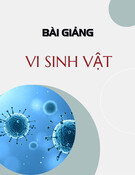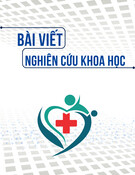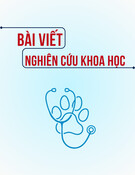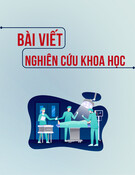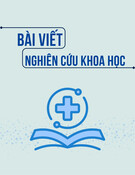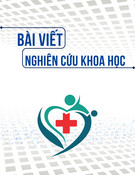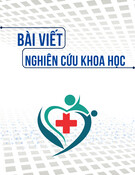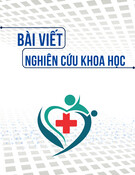
THUỐC THANH NHIỆT
GV: PGS.TS Bùi Hồng Cường
1
BỘ MÔN DƯỢC HỌC CỔ TRUYỀN

Mục tiêu
Trình bày: Đặc điểm chung & một số vị
thuốc:
- Thanh nhiệt giải độc
- Thanh nhiệt táo thấp
- Thanh nhiệt giáng hỏa
- Thanh nhiệt lương huyết
- Thanh nhiệt giải thử
2

NỘI DUNG
A. Đại cương
B. Thuốc thanh nhiệt giải độc
I. Đặc điểm chung
1. Tính, vị, quy kinh
2. Công năng, chủ trị
3. Phối hợp thuốc
4. Cổ phương
5. Chú ý
II. Các vị thuốc
C. Thuốc thanh nhiệt táo thấp
D. Thuốc thanh nhiệt giáng hỏa
E. Thuốc thanh nhiệt lương huyết
F. Thuốc thanh nhiệt giải thử 3

A. ĐẠI CƯƠNG
❖Thanh nhiệt = loại trừ nhiệt ~ thanh pháp
❖Các loại nhiệt:
🡪 Sinh nhiệt
🡪 Tà nhiệt: - Thực nhiệt
- Hư nhiệt
❖Tà nhiệt + tà khí khác:
Thấp nhiệt
Táo nhiệt
Phong nhiệt
❖Nhiệt qua mức 🡪 hoả 🡪
5 nhóm 🡪 trị 5 nguyên nhân bệnh khác nhau.
4
Sốt/không sốt

THUỐC THANH NHIỆT
Biểu/lý, hư/thực, nhiệt
Ngoại nhân (Ngoại/nội
tà)
Thanh nhiệt
Thanh
Thể, tình trạng, vị trí
bệnh
Nguyên nhân gây bệnh
Phương pháp điều trị
Nhóm thuốc chính
Lựa chọn thuốc

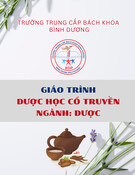

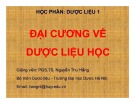

![Bài giảng Thuốc hóa đàm, chỉ ho, bình suyễn - PGS.TS Bùi Hồng Cường [Chuẩn Nhất]](https://cdn.tailieu.vn/images/document/thumbnail/2025/20250424/laphongkim0906/135x160/9251745495275.jpg)
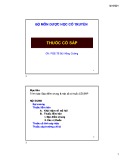
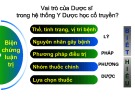
![Đánh giá tác dụng tăng lực của viên nang Linh Lộc Sơn trên thực nghiệm: [Phân tích chi tiết]](https://cdn.tailieu.vn/images/document/thumbnail/2025/20250228/viinuzuka/135x160/7461740737076.jpg)
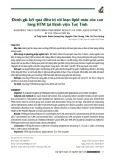

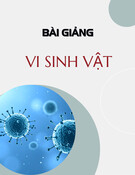
![Bài giảng Vi sinh vật: Đại cương về miễn dịch và ứng dụng [chuẩn nhất]](https://cdn.tailieu.vn/images/document/thumbnail/2025/20251124/royalnguyen223@gmail.com/135x160/49791764038504.jpg)
